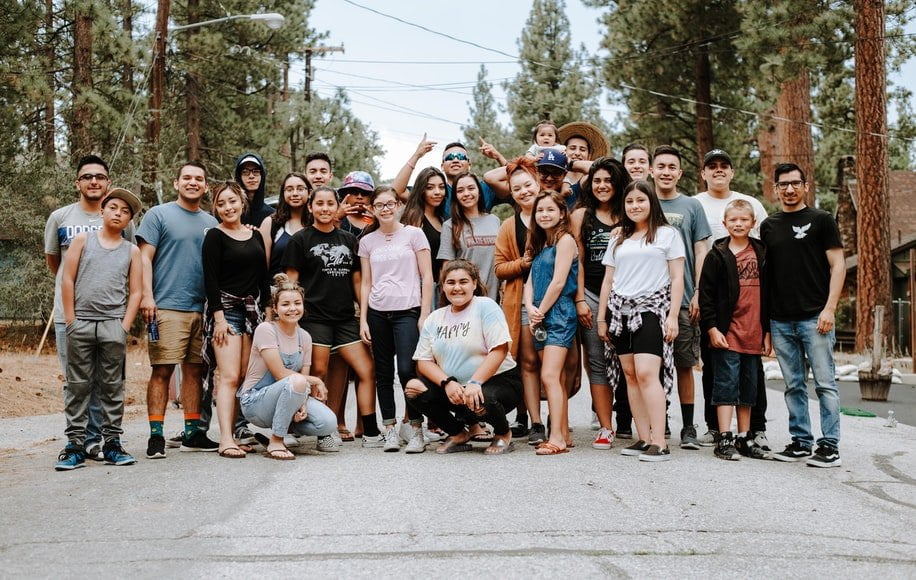The 9 Types of Online Communities
by Abdul Aziz Mondal Business Published on: 25 January 2022 Last Updated on: 19 October 2024

Organizations are unlocking their full potential by utilizing online communities to engage and grow. Today, the internet is full of different types of online communities. While the mechanism remains the same, the purpose of each community differs.
Therefore, the first step toward realizing a goal is finding or building the right type of online community. For this, selecting the correct platform and purpose is key. Generally, people may come together online for fun, socialization, self-improvement, fan-following, or building customer-brand relationships.
Furthermore, it is critical to understand users’ behaviour, wants, and needs before building an online community. Efforts should be made to make the community purposeful for the users. Hence, to achieve excellence, decide the niche of your community.
Meanwhile, if you are looking for a comprehensive guide on building an online community, visit https://viafoura.com/blog/how-to-build-an-online-community/.
Types Of Communities

Here are nine types of online communities:
i. Social communities
This is the most common type of online community. Here people, influencers, politicians, and brands come together to communicate with their desired audience. Beyond communication, the social community transforms digital marketing, broadcasting, and running campaigns.
While growing their presence, brands can also track competitors and customer trends. Facebook, Twitter, and Instagram are some of the popular social communities. However, the scope of social media is changing rapidly.
ii. Branded communities
A brand community is a closed association of people related to a specific brand. Whatever the reason for association, only authentic user credentials will allow a person to join the community.
A brand can build a strong community of passionate and loyal customers through this. In this symbiotic relationship, both customers and brands are equally benefited. Brands can leverage a loyal fan base to generate quality leads.
Similarly, customers earn loyalty points and rewards and get updates on the latest products and services by following such communities.
iii. Support communities
Support communities such as Amazon support or Walmart support are made to offer online customer support to their customers. Beyond support, it lets the users share product tips and reviews. Furthermore, a satisfied customer has the option to review and rate brand services.
According to the latest trends, complaints received on social media support communities tend to get faster attention than other modes. Similarly, a brand gets insightful suggestions to improve its product and services. Also, creating online support communities helps in cutting customer support costs.
Overall, it helps in enhancing customer experience, marketing, and innovation.
iv. Professional communities
This community offers a platform for individuals from the same profession to share their knowledge. Having said that, the community’s content should be advanced enough to attract professionals’ attention. The content should add value to the knowledge of members.
For instance, a lawyer will only join a legal community if it offers what he is looking for. In this case, insightful content can be research, results of legal cases, problem perceptions, latest trends, and professional tips.
v. Action communities
Such types of online communities advocate certain types of calls for action. NGOs and influencers running an online campaign to bring about social changes are typical examples. Action communities also differ according to their purpose.
Like other platforms, thought sharing is also common in active communities.
vi. Interest-based communities
This community brings like-minded people together to discuss their common interests. Interest-based communities are fuelled by specific hobbies, passions, or sports. The content of this community has to be engaging and entertaining.
The main aim of such communities is to share and promote passion rather than personal hobbies. Videos such as those with DIY tips are most popular amongst interest-based communities.
vii. Local communities
Also referred to as a community of place or a place-based community, local communities are generally restricted to a geographical area. Such communities bring people from certain neighbourhoods, towns, or workplaces on a single platform.
As local communities are primarily concentrated in small areas, neighbours can exchange news or other vital information.
viii. Circumstantial communities
These communities bring together individuals who share similar life experiences, such as parenthood. The members of such communities are always on the lookout for information. Additionally, the members are also motivated to contribute or publish some of their content as well.
ix. Fan communities
Fan communities have garnered significant popularity nowadays. Such communities are often formed around favourite movies, media, books, creators, musicians, YouTubers, streamers, etc.
These communities could be either public to anyone interested in participating or entirely private and open to those who support their work.
Steps To Building An Online Community

The online community is a valuable marketing strategy. It allows brands to get constant feedback for their services, products, or copies and offers scope for improvement.
It takes a lot of effort, resources, and time to build an online community. First, you need to figure out the purpose and the promotional strategy for building an online community.
Here is how you can go about the same:
- Identifying the key stakeholders for your online community
- Defining the purpose and the goal
- Selection of the community platform
- Building a member profile
- Developing strict norms and rules
- Setting up the online community
- Promoting your online community
You can use audience insights tools to get more realistic data about the latest user sentiments.
Key Takeaways
An online community could range from a billion-person Instagram community to a 10-person Facebook private group community.
Thus, identifying the right type of online community that is best suited to your specific business requirements is the very first step towards building an online community.
Recognizing the importance of customers, employees, and stakeholders is key to effectively engaging in the ongoing two-way communication processes. All you need to do is to map the specific business requirements against the different types of online communities available at your disposal. That way, you get to derive the desirable ROI from the effective utilization of these vital business tools.
In conclusion, the main ingredient for the success of any community is purpose. People like to connect for a purpose. So, efforts should be made to identify and fuel the purpose for the community’s growth.
Read Also:



































































































